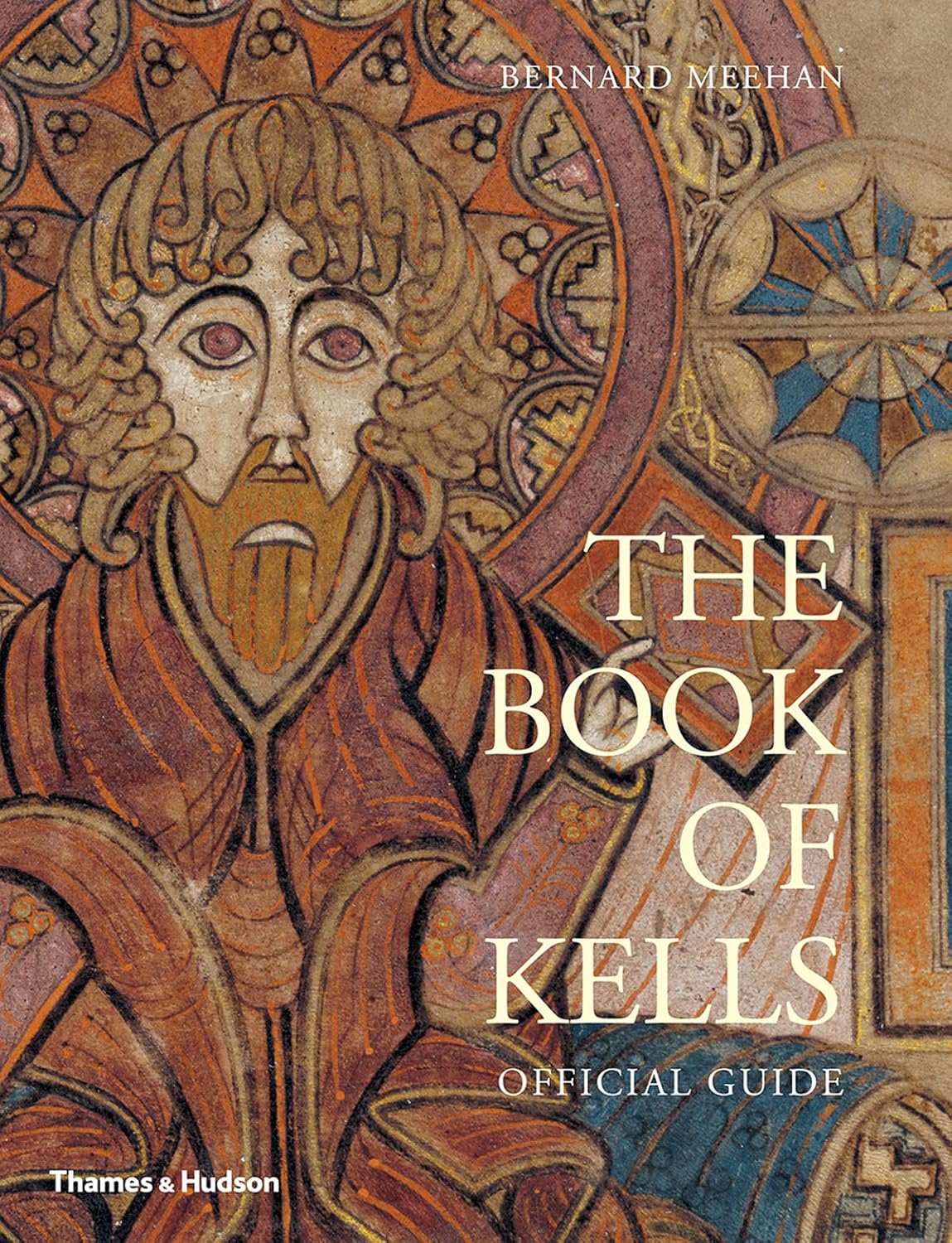Welcome to the ultimate guide covering the Isle of Mull and Iona facts, perfect for planning your Hebridean adventure. These two magnificent Scottish islands offer an unparalleled blend of dramatic wildlife, ancient history, and spiritual tranquility. We’ve compiled 15 essential pieces of information, ensuring the topic is clear immediately and providing rich detail on all the sights you must see, from volcanoes to royalty.
Isle of Mull Facts: Wildlife and Geology
1: The UK’s Eagle Island
The reintroduction of the White-tailed Sea Eagle, also known as the Sea Eagle, made Mull a crucial conservation success story. These magnificent birds, featuring wingspans up to 8 feet, were once extinct in the UK. However, they now thrive in Mull’s vast, coastal territories. The island’s varied landscape of rugged cliffs and lochs provides an ideal hunting ground and nesting habitat for these spectacular raptors.
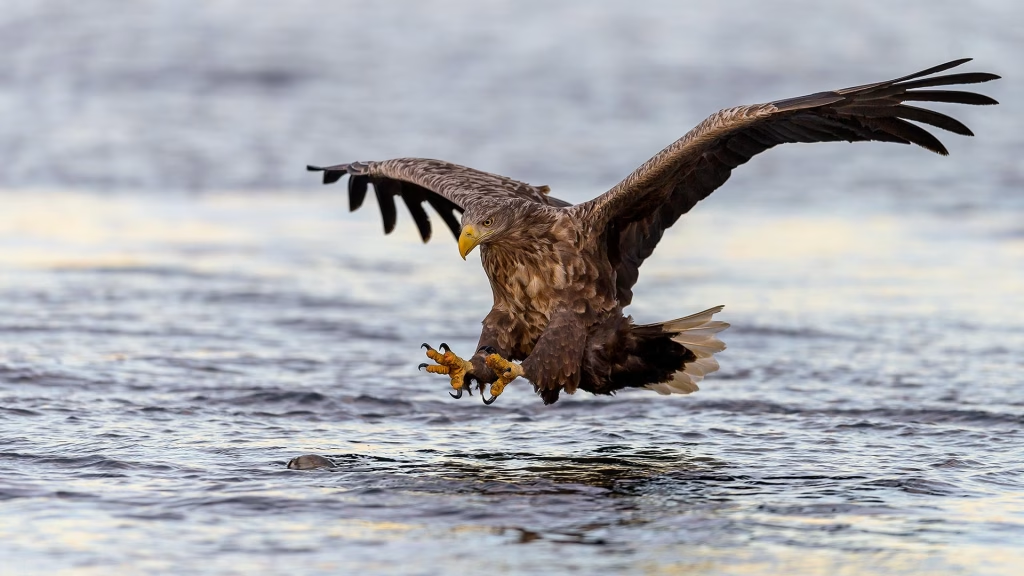
Mull also supports a healthy population of the smaller, yet equally impressive, Golden Eagle. Therefore, sightings of both species are frequent, drawing birdwatching enthusiasts worldwide. Furthermore, local guides and nature tours often focus on prime viewing areas, boosting the island’s tourism. This establishes Mull’s reputation as the premier location in Britain for eagle spotting. For more detailed information on wildlife spotting, check out our post Encountering Mull’s Big 5: A Wildlife Spectacle.
2: The Colourful Harbour of Tobermory
The distinctive, colourful waterfront of Tobermory is arguably the most famous visual trademark of the Isle of Mull. The town was founded in 1788 by the British Fisheries Society as a planned fishing port, but the brightly painted façades came much later. Rather than part of the original scheme, the colours emerged organically in the late 20th century, driven by local businesses seeking visibility and character. Today, these cheerful buildings house shops, cafés, restaurants, and the local whisky distillery, forming a vibrant contrast with the surrounding wild landscape.
This picturesque harbour also achieved fame as a filming location, notably as the setting for the popular children’s television show Balamory. Beyond its visual appeal, Tobermory serves as Mull’s administrative and cultural hub. It offers visitors a museum, an arts centre, and the primary base for many of the island’s popular boat trips and wildlife tours. To explore more about the history of the town, you could visit the Mull Museum website.
3: Ben More, The Inner Hebrides’ Only Munro
Reaching an elevation of 966 metres (3,169 feet), Ben More is a significant landmark, dominating the centre-west of the island. Its classification as a Munro a mountain in Scotland with a height over 3,000 feet makes it a draw for serious hikers and ‘Munro baggers.’ The climb is challenging but rewarding. Significantly, the summit offers one of the most expansive panoramic views in the west of Scotland, stretching across the Inner Hebrides to the Outer Hebrides and even to the mainland.
Ben More is part of a complex of hills that form the island’s geological backbone. The mountain’s name translates from Gaelic as “Great Mountain.” Its sheer size and isolation contribute to Mull’s rugged, wild nature. Thus, the island is a popular destination for those seeking a true wilderness experience without venturing to the more distant Outer Isles.
4: The Remnants of a Tertiary Volcano
Mull’s geology is exceptionally complex. Its dramatic features owe their existence to an ancient period of intense volcanic activity. The island lies at the centre of one of the major volcanic centres of the North Atlantic Igneous Province. Over millions of years, the volcano’s caldera eroded, leaving behind the circular system of lava flows, dykes, and cone sheets that define Mull’s spectacular, jagged topography and the formation of Ben More.
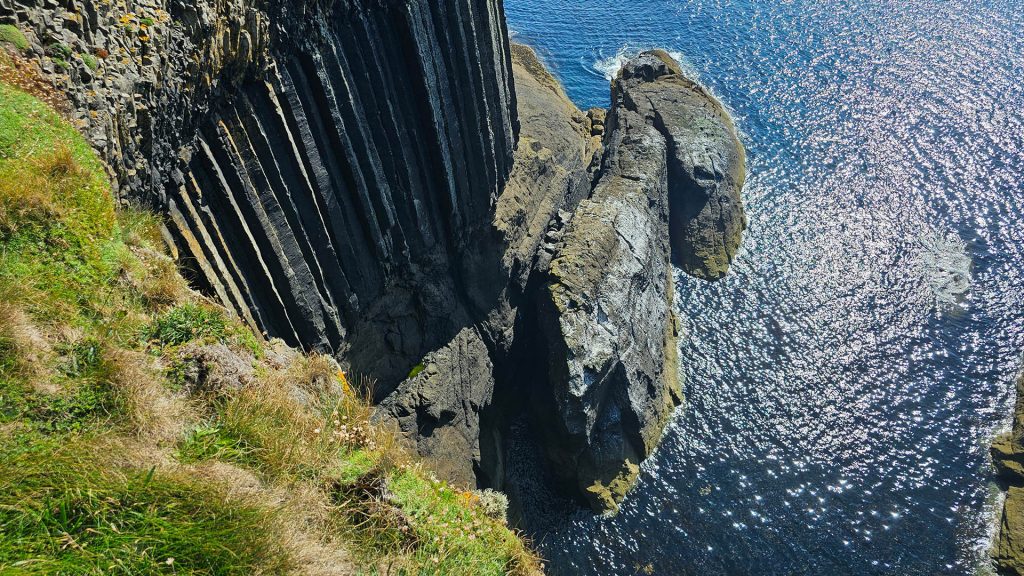
This volcanic past created the dark basaltic rocks that make up much of the island. Furthermore, the exposure of these igneous structures provides scientists with a unique window into Earth’s history. For example, the dramatic cliffs and distinct geological formations, such as the basalt columns seen on nearby Staffa (often visited from Mull), result directly from this long-extinct eruption, shaping the island’s identity and visual drama.
5: Duart Castle, Clan Maclean’s Ancestral Seat
Perched dramatically on a cliff overlooking the Sound of Mull, Duart Castle is one of Scotland’s most recognisable and strategically important castles. Its origins trace back to the 13th century. Importantly, it served as the continuous home and stronghold of the Clan Maclean, though the Campbells seized it and allowed it to fall into a roofless ruin in the 18th century. It remained a ruin for nearly two centuries, symbolizing the Clan’s lost power.
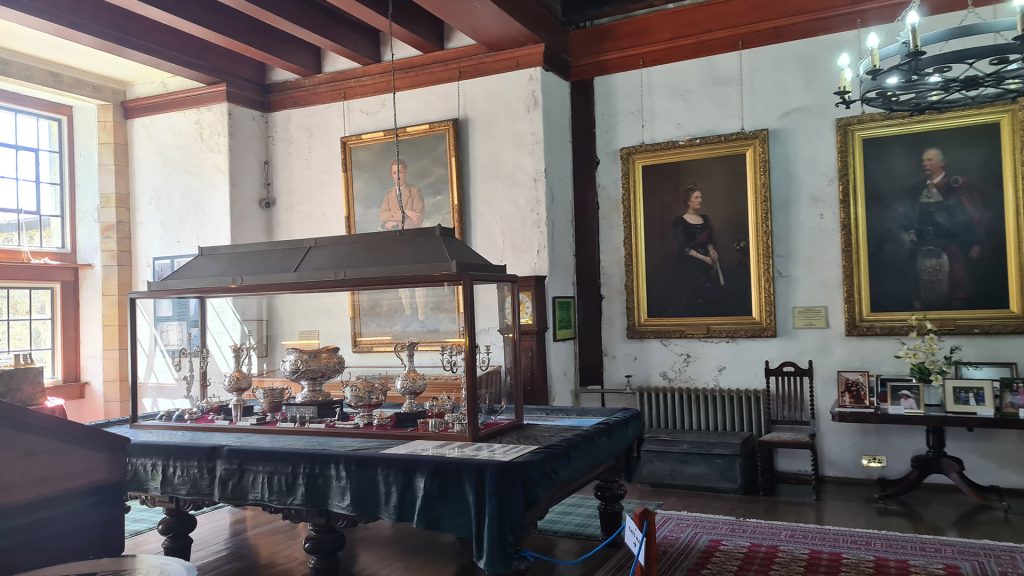
Sir Fitzroy Maclean bought back the castle in a major historical preservation undertaking. He painstakingly restored it in 1910, transforming it from a shell into a magnificent family home and museum. Today, Duart Castle is an essential stop for visitors. It offers a look into the turbulent history of the Highland clans and provides breathtaking views across the water to the Scottish mainland. For visitor details, check the Duart Castle official website.
6: Exceptional Biodiversity
Mull’s rich biodiversity stems from its mosaic of habitats. These include coastal machair, deep sea lochs, ancient woodland, moorland, and high mountains. This ecological richness supports a vast number of species, from tiny wildflowers and rare insects to large mammals. Since the island sits off the west coast, it also lies along a key migratory route for marine life and birds, further enhancing its ecological significance.
Beyond the celebrated eagles, the island is a haven for Red Deer, Fallow Deer, and a wide array of seabirds. This includes the puffins that breed on the nearby Treshnish Isles. We often highlight the health of Mull’s ecosystem as a model for nature conservation in the UK, making it a critical site for biological study and a magnet for ecotourism. Find a local wildlife tour.
7: A Haven for the Eurasian Otter
The elusive Eurasian Otter thrives on Mull. This is due to the clean waters, unpolluted coastlines, and abundance of prey, particularly fish and crustaceans. Unlike some areas where otters live only in rivers, the Mull population is predominantly coastal. This means they hunt in the sea lochs and around the shore, which can make them slightly easier for keen wildlife watchers to spot.
Otter sightings are a common feature of the island’s wildlife tours, although patience is always required. These animals are incredibly shy. Nevertheless, experienced local guides know their habitual feeding grounds, called “holts.” Their presence also serves as an indicator of the pristine condition of Mull’s marine environment.
8: The Nearly 300-Mile Coastline
Mull’s extensive coastline is deeply indented with many sea lochs and bays, creating a diverse interface between land and sea. This great length means there are countless secluded beaches, dramatic cliffs, and sheltered coves to explore. Generally, the road network hugs the coast, offering continuous stunning views, particularly along the popular scenic routes.
The surrounding sea is a hub of marine activity. Boat trips departing from Mull allow visitors to venture further, offering chances to see Common Seals, Grey Seals, Harbour Porpoises, and various species of dolphins. In the summer months, tours often encounter larger species such as Minke Whales and the impressive Basking Sharks, making the waters around Mull a significant spot for cetacean watching.
Isle of Iona Facts: Spiritual and Ancient History
9: The Cradle of Scottish Christianity
St. Columba, an Irish prince and missionary, arrived on Iona with twelve companions in the year AD 563. He established a monastic community that would profoundly influence the whole of Britain. Consequently, monks from Iona embarked on missions to convert the Picts and Scots to Christianity, most notably through figures like St. Aidan, who carried the faith to Northumbria by founding the monastery at Lindisfarne. For centuries, Iona became the most important religious and artistic centre in Western Europe.
Although Viking raids repeatedly attacked and eventually destroyed the original timber monastery starting in the 8th century, the island’s spiritual pull never faded. The present Iona Abbey, which we rebuilt in the medieval period and restored in the 20th century, stands on the site of Columba’s original foundation. It maintains the island’s status as a powerful, enduring symbol of faith and pilgrimage. This is a fundamental element of the Isle of Mull and Iona facts that defines the region.
10: The Burial Ground of Kings
Reilig Odhráin (meaning “Oran’s Burial Place”) is one of Scotland’s most hallowed graveyards. According to tradition, this site became the preferred burial ground for the royalty of the early kingdoms of Dál Riata, as well as Norse and Irish kings. People believed that burial on Iona would grant immediate entry into heaven due to the island’s sanctity.
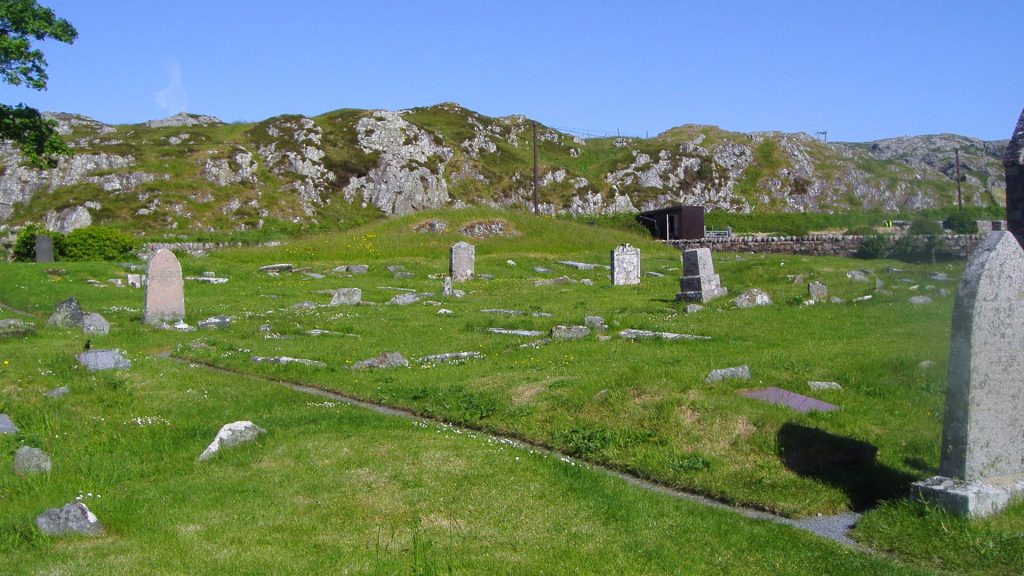
While modern historical analysis suggests the full number of 60 kings may be legendary, the site is unquestionably the burial place for many key figures in Scottish history. These include the Lords of the Isles and important clan chiefs. The ground contains numerous intricately carved medieval grave slabs, reflecting Iona’s prestige and its role as an ecclesiastical capital for centuries. To see some of the medieval carvings, check the Historic Environment Iona Abbey.
11: The Car-Free Policy
The lack of tourist vehicle traffic defines Iona’s peaceful and reflective atmosphere. The decision to restrict cars (only residents and essential services possess vehicle permits) ensures that walkers and cyclists dominate the island’s small roads and paths. This policy fundamentally preserves the island’s tranquil character, which is crucial to its identity as a spiritual retreat and place of pilgrimage.
Visitors access the island via a short, ten-minute passenger ferry from Fionnphport on the Isle of Mull. Since the island measures only three miles by one and a half miles, all key sites, including the Abbey, Nunnery, and white sand beaches, are easily reached on foot. This encourages a slower pace of exploration and deeper engagement with the landscape.
12: The Origin of the Book of Kells
The Book of Kells, a masterful work of calligraphy and illustration, is one of the Western world’s greatest treasures. Although it now resides in Trinity College, Dublin, scholars widely agree that Iona either started or completed the manuscript entirely. The stylistic elements and the turbulent period of its creation strongly suggest the scriptorium of St. Columba’s monastery produced it in the late 8th or early 9th century.
The manuscript was likely taken from Iona to Kells in Ireland for safekeeping around 806 AD. This followed a particularly devastating series of Viking raids that resulted in the massacre of 68 monks. This act of preservation saved the masterpiece, linking the small Scottish island forever to one of the most magnificent artistic achievements of the early Middle Ages.
The Book of Kells, dating from about 800, is a brilliantly decorated manuscript of the four Gospels. This new official guide, by the former Keeper of Manuscripts at Trinity College Library, Dublin, provides fascinating insights into the Book of Kells, revealing the astounding detail and richness of one of the greatest works of medieval art.
13: Sits on Europe’s Oldest Rock
The western section of Iona is geologically distinct. It features a type of rock known as Lewisian Gneiss. This rock is metamorphic and dates back to the Archaean Eon, making it over 2.5 billion years old. Consequently, walking on the western beaches of Iona is literally walking on some of the most ancient continental crust found anywhere on the continent.
Much of this gneiss on Iona is a beautiful pale pink or green colour. This is especially noticeable on the famous white sand beaches where fragments of the ancient rock mix with shells. This geological feature contributes to the island’s unique beauty and is a source of fascination for geologists and visitors alike.
14: The 8th-Century St. Martin’s Cross
St. Martin’s Cross is a remarkable piece of early Christian art, dating from around 750 AD. Standing over 10 feet tall, the cross is carved from a single piece of dark schist. It features intricate, well-preserved panels depicting biblical scenes, including Daniel in the lions’ den and the Virgin and Child. Its enduring presence marks the ancient processional route to the Abbey.
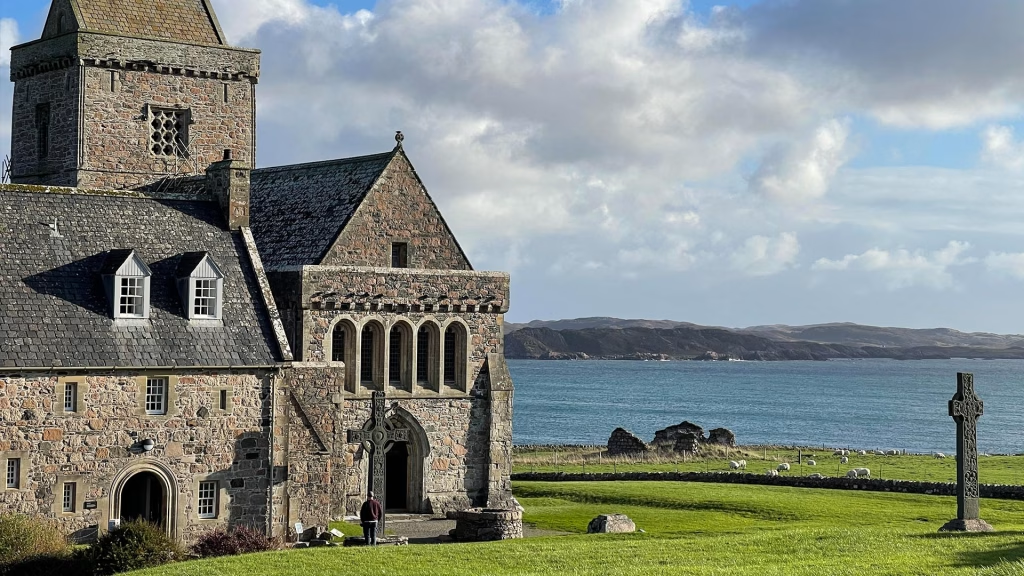
Unlike other great Iona crosses (such as St. John’s Cross, which is represented by a replica with the fragments preserved indoors), St. Martin’s Cross is the original structure. It has stood in place for over 1,250 years. Its survival through centuries of weathering, conflict, and religious upheaval testifies to the skill of the early Iona stone carvers and its deeply revered status. This monument is a powerful example of the deep Isle of Mull and Iona facts related to faith and art.
15: The Island’s Compact, Walkable Size
The modest scale of Iona is fundamental to its appeal. It creates a sense of intimacy and tranquility that larger islands lack. The island’s size ensures all major points of interest are easily accessible on foot. This includes the historic Abbey and Nunnery near the ferry landing, the remote northern bays, and the high point of Dun I. This encourages slow, mindful travel. Planning a visit is simple; all you need is a map.
This walkability allows a visitor to fully absorb the island’s unique atmosphere. They can explore everything from its historical core to its stunning natural periphery. Therefore, the compact nature of Iona means a day trip from Mull provides a rich and complete experience. Those who stay overnight are rewarded with the profound silence and clarity of a secluded Hebridean island.

